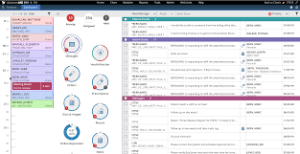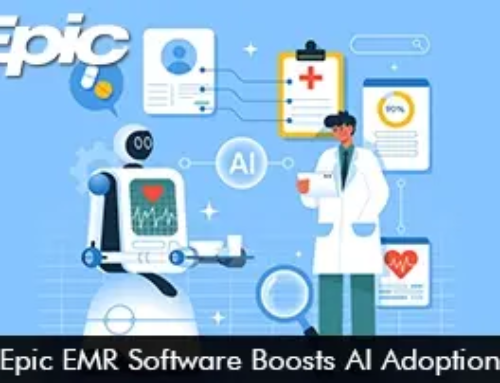Genomics data mapping and Electronic Medical Records (EMR) software play a crucial role in diagnosis, treatment, and disease prevention. Genomics data mapping involves deciphering an individual’s genetic makeup, while EHR software is comprehensive digital records of a patient’s medical history. In this blog, we explore the intersection of genomics data mapping and EMR software and the potential they hold in advancing healthcare.
The Genomics Revolution
Genomics is a field of molecular biology that focuses on the study of an organism’s complete set of DNA. It has undergone a rapid transformation in the last few decades. Technological advancements, such as Next-Generation Sequencing (NGS), have made it possible to sequence entire genomes efficiently and cost-effectively. This has led to an explosion of genomics data, providing a treasure trove of information for researchers and clinicians.
Genomics Data Mapping: Deciphering the Code of Life
Genomics data mapping involves the analysis and interpretation of an individual’s genetic code. Each person’s genome is composed of over three billion base pairs, forming the unique blueprint that determines their physical and genetic characteristics. Deciphering this genetic code allows physicians to identify variations, mutations, and other genetic factors that play a significant role in health and disease.
The key aspects of genomics data mapping are:
Genome Sequencing: This is the foundation of genomics. This process involves determining the order of DNA bases in an individual’s genome. Whole-genome sequencing (WGS) and targeted sequencing are common methods.
Variant Identification: This step involves identifying genetic variants, such as single nucleotide polymorphisms (SNPs) and insertions/deletions (indels), that may be associated with disease susceptibility or treatment response.
Bioinformatics Analysis: Advanced computational tools are used to process and analyze the vast amount of genomic data generated. This step is critical for translating raw genomic data into clinically relevant insights.
Genomics Data Mapping and EMR Software
Electronic health records (EHR), also known as EMR software, are digital versions of a patient’s paper charts. EMR software contains a patient’s medical history, including diagnoses, treatment plans, medications, test results, and more. The adoption of EMR software has transformed healthcare by improving the accessibility and accuracy of patient information. These records are maintained and updated in real-time, providing a comprehensive view of a patient’s health journey.
Key aspects of EMR software:
Digital Record-Keeping: EMR software eliminates the need for paper records, making medical information easily accessible, searchable, and shareable among healthcare providers.
Clinical Decision Support: EMR software offers clinical decision support, suggesting treatments and diagnostic tests based on patient data. This feature enhances patient care by reducing errors and ensuring evidence-based practice.
Interoperability: EMR software is shared securely between different healthcare institutions, enabling a seamless flow of information among providers and specialists.
The Synergy Between Genomics Data Mapping and EMR Software
The convergence of genomics data mapping and EMR software is where the true potential of precision medicine is unlocked. Here’s how these two pillars of healthcare complement each other:
Enhanced Diagnosis and Personalized Treatment: Integrating genomics data into EMR software enables clinicians to have a more comprehensive view of a patient’s health. Genetic information identifies disease risks and guides tailored treatment plans. For instance, genetic markers inform cancer treatment choices, optimizing the selection of chemotherapy or targeted therapies.
Preventive Medicine: Combining genomics data with EMR software allows for proactive disease prevention. By identifying genetic predispositions and analyzing patient records, healthcare providers offer personalized lifestyle and preventive recommendations.
Early Detection: Genetic markers are used to screen for inherited diseases. When such markers are integrated into EMR software, they trigger alerts for further investigation, enabling early detection and intervention.
Drug Responsiveness: Understanding a patient’s genetic makeup helps predict their response to medications. This information guides physicians in prescribing the most effective drugs while avoiding those that may be less beneficial or cause adverse reactions.
Challenges and Considerations
While the integration of genomics data mapping and EMRs holds immense promise, there are several challenges and considerations to address:
Privacy and Ethical Concerns: The sensitive nature of genomic data requires robust privacy protections. Strict regulations and ethical guidelines must be in place to safeguard patients’ genetic information.
Data Standardization: Genomics data comes in various formats, making it essential to standardize data for seamless integration with EMRs.
Interoperability: For full utilization of genomics data, EMRs from different healthcare providers and institutions must be interoperable. This requires uniform data standards and protocols.
Educational Needs: Healthcare providers and clinicians need education and training to interpret and use genomics data effectively in patient care.
Data Storage and Security: The vast amount of genomic data requires secure storage and protection from breaches. Robust cybersecurity measures are crucial.
The Future of Healthcare: Genomics-EMR Integration
As technology advances and our understanding of genomics deepens, the integration of genomics data mapping with EMRs will become more prevalent. Here are some potential developments in this dynamic field:
AI-Driven Insights: Artificial intelligence will play a significant role in analyzing vast genomics data. Machine learning algorithms can identify patterns, predict disease risks, and offer treatment recommendations based on individual genetic profiles.
Population Health Management: Genomics-EMR integration can provide insights into population health trends and susceptibility to diseases, allowing for proactive public health measures.
Telemedicine: With remote healthcare becoming more common, genomics data can be seamlessly incorporated into virtual care, allowing physicians to offer personalized remote consultations.
Patient Empowerment: Patients will have greater access to their genomic data and the ability to add it to their EMRs, fostering a sense of ownership and involvement in their healthcare decisions.









